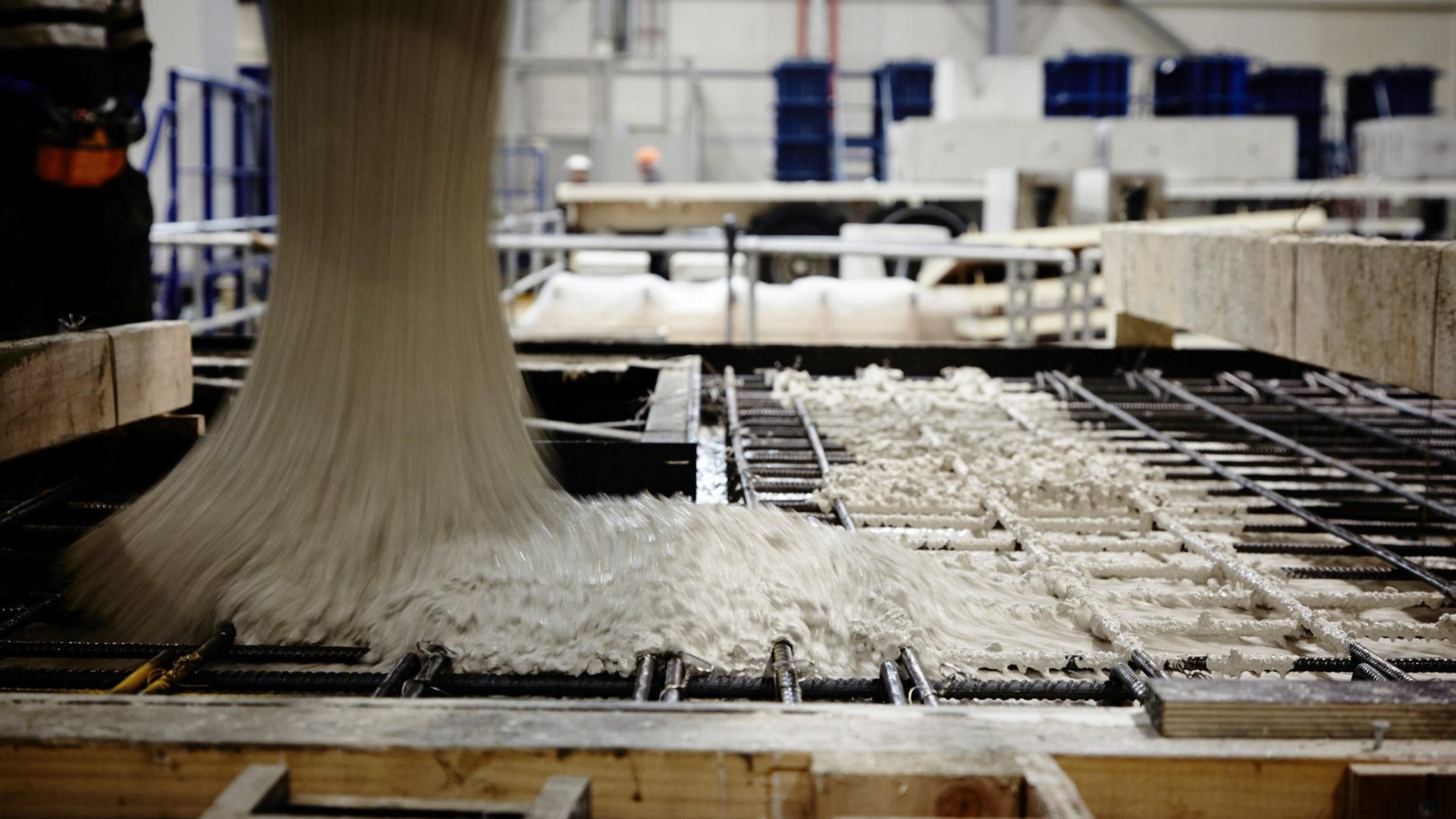
Laing O’Rourke is mandating a switch to low carbon concrete on all its new UK projects.
The change applies to all jobs starting construction on or after 1 April 2023.
The company said the move will result in an overall carbon reduction of 28% compared with the company’s concrete usage in 2022. This figure was calculated by applying the definition of low carbon concrete, specified by the Institution of Civil Engineers’s Low Carbon Concrete Routemap, to last year’s production volumes.
Laing O’Rourke is already using a higher grade of this type of concrete in some of its projects, including Hinkley Point C.
A like-for-like substitute for traditional concrete
The switch to low carbon concrete follows a long-term research programme co-funded by Laing O’Rourke and Innovate UK in collaboration with the University of Cambridge and Sheffield University’s Advanced Manufacturing Research Centre.
The study found that low carbon concrete can be deployed on projects as an equivalent substitute for traditional concrete.
Laing O’Rourke’s version uses lower carbon alternatives to ordinary Portland cement. These include ground granulated blast-furnace slag and pulverised fly ash, both of which are industrial by-products with a lower carbon footprint.
Ongoing research by the company is looking at wider scale deployment of cement-free options, which are ultra-low carbon.
Laing O’Rourke’s new chief operating officer, Cathal O’Rourke, said: “We’ve committed to being a net-zero company before 2050 and we are looking at every possible measure to accelerate our progress. In construction, the greatest challenge is reducing Scope 3 emissions – the embodied carbon in purchased materials.
“Reducing all carbon emissions is a priority for our business. The built environment makes a significant contribution to global warming and constructors must work with clients and design partners to deploy new technologies and innovations that make modern methods the norm and enable us to build in less carbon intensive ways.”











